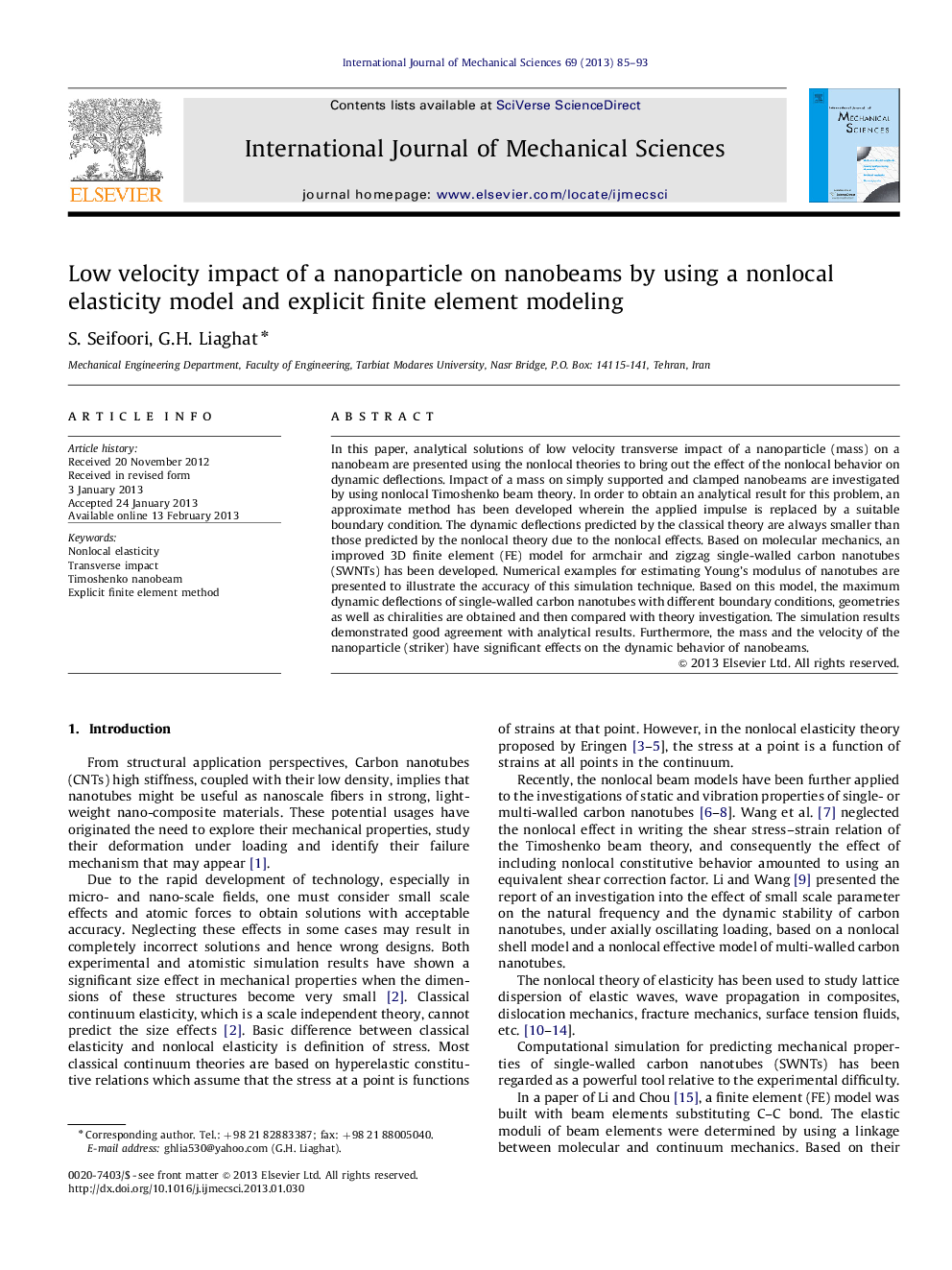| Article ID | Journal | Published Year | Pages | File Type |
|---|---|---|---|---|
| 785820 | International Journal of Mechanical Sciences | 2013 | 9 Pages |
In this paper, analytical solutions of low velocity transverse impact of a nanoparticle (mass) on a nanobeam are presented using the nonlocal theories to bring out the effect of the nonlocal behavior on dynamic deflections. Impact of a mass on simply supported and clamped nanobeams are investigated by using nonlocal Timoshenko beam theory. In order to obtain an analytical result for this problem, an approximate method has been developed wherein the applied impulse is replaced by a suitable boundary condition. The dynamic deflections predicted by the classical theory are always smaller than those predicted by the nonlocal theory due to the nonlocal effects. Based on molecular mechanics, an improved 3D finite element (FE) model for armchair and zigzag single-walled carbon nanotubes (SWNTs) has been developed. Numerical examples for estimating Young's modulus of nanotubes are presented to illustrate the accuracy of this simulation technique. Based on this model, the maximum dynamic deflections of single-walled carbon nanotubes with different boundary conditions, geometries as well as chiralities are obtained and then compared with theory investigation. The simulation results demonstrated good agreement with analytical results. Furthermore, the mass and the velocity of the nanoparticle (striker) have significant effects on the dynamic behavior of nanobeams.
Graphical abstractAnalytical and explicit finite element modeling of low velocity transverse impact of a nanoparticle on a nanobeam are presented.Figure optionsDownload full-size imageDownload as PowerPoint slideHighlights► We present a new analytical solution of transverse impact. ► The applied impulse is replaced by a suitable boundary condition. ► We present a new explicit finite element modeling of transverse impact. ► Both implicit and explicit analyses were made to illustrate the accuracy. ► The effects of the nonlocal parameter on the dynamic responses are investigated.
